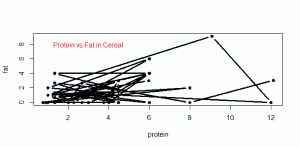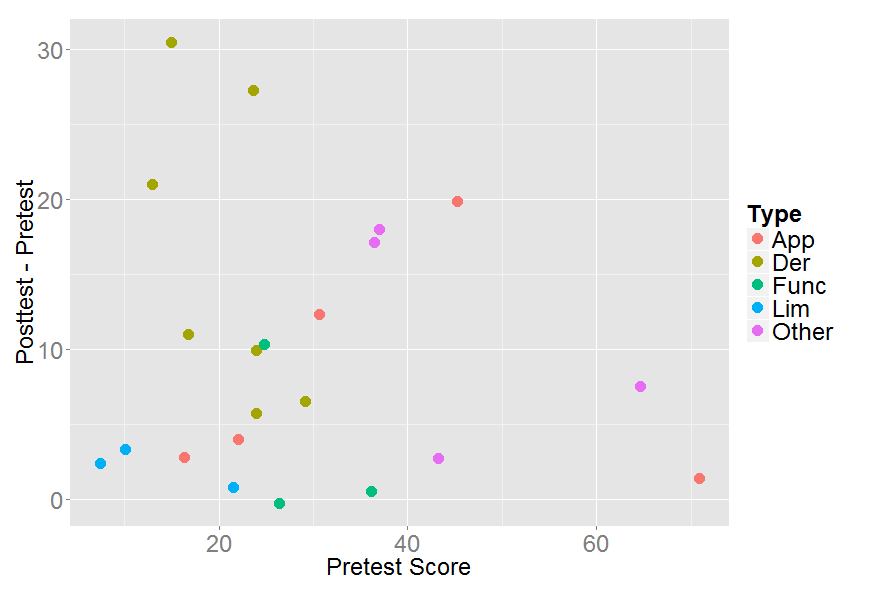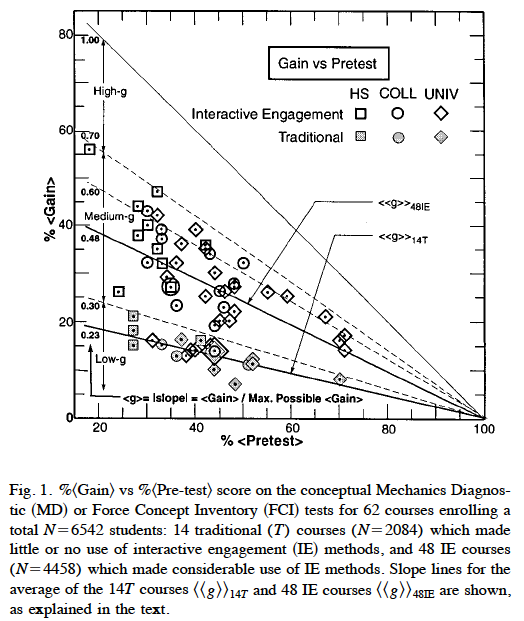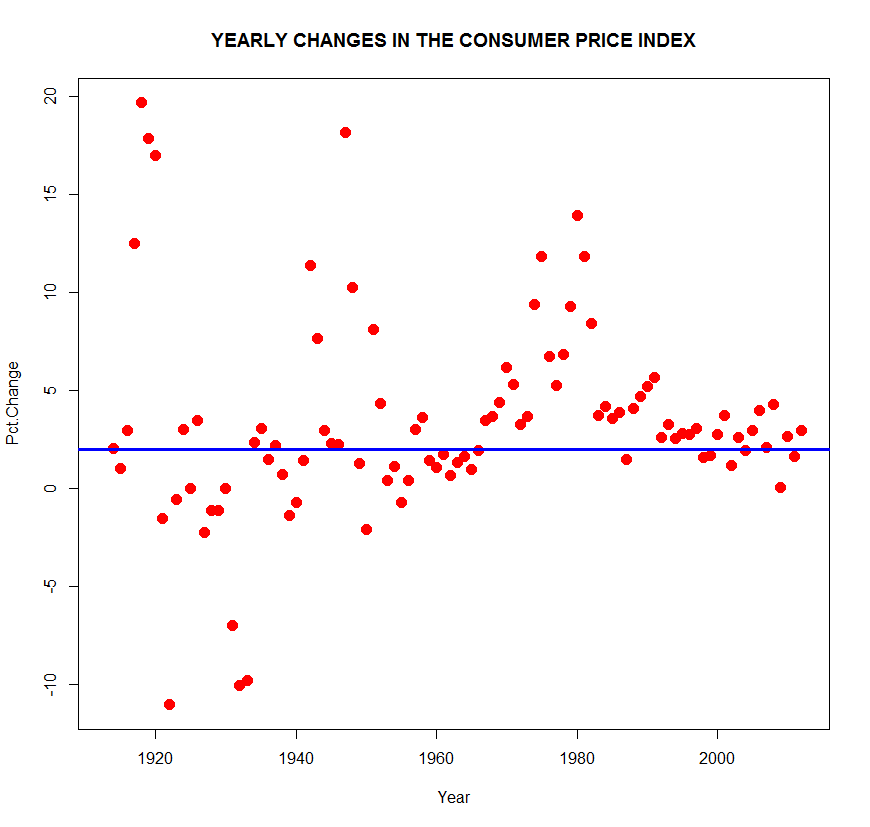In last week’s blog assignment, you were supposed to show me examples of a scatterplot that displayed unclear vision. This seemed to be a fun assignment — let me show you several examples that you created.
Here’s Nate’s graph. It is unclear for two reasons: the large solid plotting points overlap, making it hard to see the individual points, and the aspect ratio is chosen so it difficult to see the pattern of points.
Janine crated a really bad graph — bad in the visual sense.
Janine chose small plotting points and added connecting lines which obscure any pattern one might see in the graph.
Some of you showed me bad graphs that had poor axis labels, a poorly worded or hard to read caption, or a inappropriate title. Although these graphs are bad, actually they illustrate poor communication (that we talk about in the Clear Understanding section) rather than poor vision.






